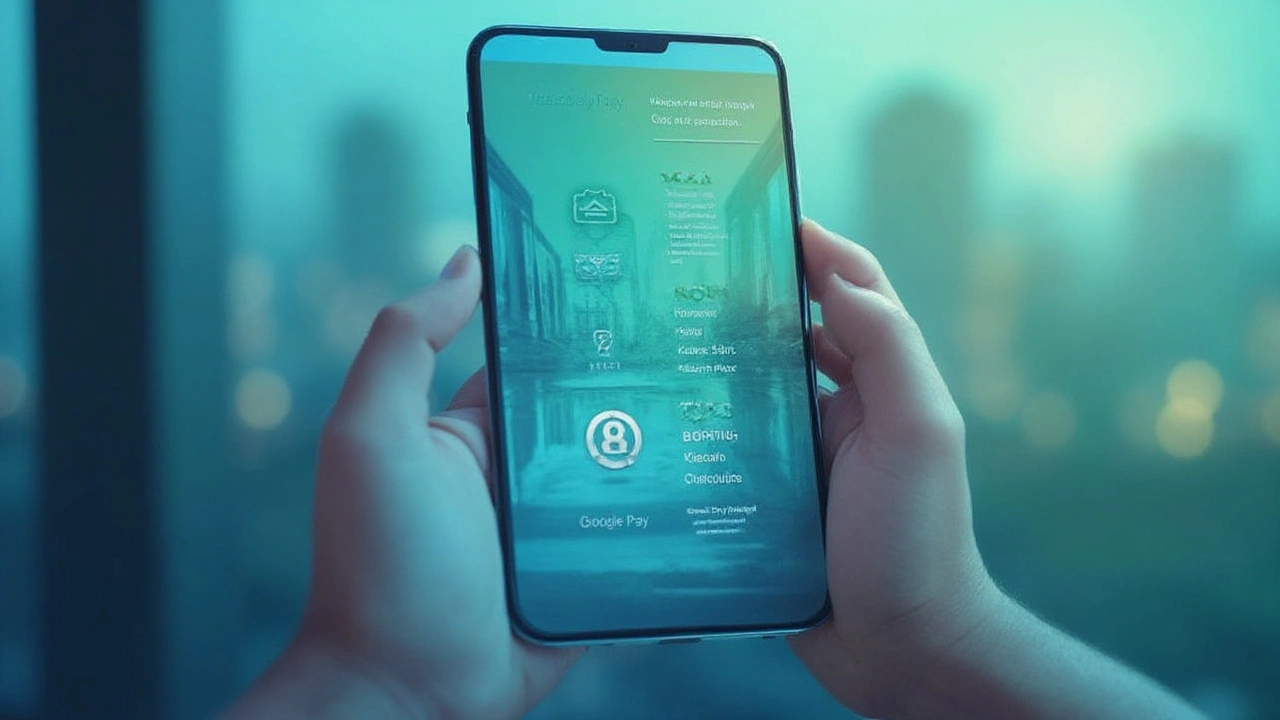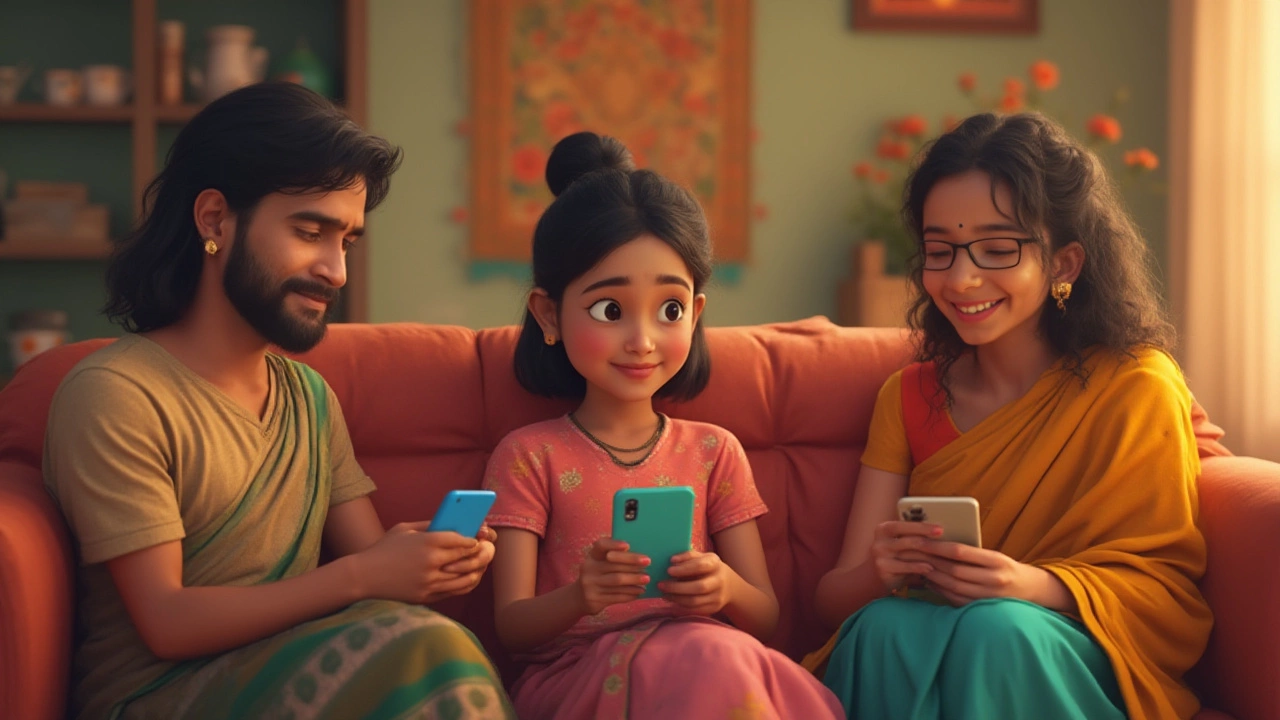If you ever wondered why rickshaw drivers, chaiwallahs, and big brand stores across India all whip out the same QR code or ask, “Google Pay chalega?” here’s the inside scoop. India has jumped decades ahead by embracing digital payments, and Google Pay India is right at the center of this revolution. UPI—you might’ve heard people talk about it like it’s some insider code—powers all of it in the back. With over 450 million users as of 2025, people use Google Pay for everything from buying street food to splitting dinner bills, but where do you start and how do you keep things secure?
Getting Started with Google Pay in India
The first thing you’ve got to know is that using Google Pay in India is all about connecting to UPI—Unified Payments Interface. UPI isn’t just a tech term. It’s how people in India send cash from one bank to another using a simple mobile number or a QR code, instantly and free. Almost every bank in India connects with UPI, so you don’t need to switch banks to get going.
Download the Google Pay app from the Play Store or App Store. Don’t get confused if you’re already using Google Pay in Australia or the US—the Indian version is different because it’s built for UPI. Once installed, you’ll need to enter your Indian mobile number that’s linked to your Indian bank account. That’s important: your mobile number must match the number registered with your bank. If you’re using a foreign number, it simply won’t work.
Next, Google Pay sends a one-time password (OTP). Once verified, choose your bank from the list—pretty much every major Indian bank is there. The app automatically fetches your account details with the mobile number. You might notice ‘Create UPI PIN’ pop up—this acts like your bank ATM PIN, so don’t share it with anyone, ever. Set a PIN you’ll remember. That’s the gatekeeper for every transaction you make going forward.
The setup process takes just a few minutes, maybe less if you know your way around a mobile app. If you hit a snag, like your number not matching your bank, the app flags it and prompts you to fix it. Quick tip: always keep your Indian SIM active and in your device when doing this. If you’re setting this up outside India, you might need roaming turned on to get that OTP.
After setup, take a walk-through of the app. The homepage isn’t cluttered. You get options to pay contacts, scan QR codes, or pay bills. The little round ‘New Payment’ button is your best friend—it puts everything you can do right at your fingertips.
Don’t ignore the ‘Promotions’ tab—Google Pay India often has cashback offers when you’re paying certain merchants or even when you send money to friends. Some people literally pay rent or split bills just to get those extra rupees back as scratch cards.
For people who deal with multiple bank accounts, Google Pay lets you add more than one account and switch between them before you hit pay. That comes in handy for freelancers, business people, or just someone who likes to manage their cash in different places.
Keep an eye on your account balance—just tap on your bank name, enter your UPI PIN, and see your live bank balance instantly, no waiting for SMS alerts. This little feature saves a lot of second-guessing when you’re making big payments or want to be sure you got paid.

Making Payments and Using Google Pay Features
Now, here’s where Google Pay shines—making payments is dead simple. Want to send money to a friend? Just select their phone number (if they’re on UPI), enter the amount, add a quick note or emoji for fun, punch in your UPI PIN, and the cash flies off to their account in seconds. You get a notification as soon as the money’s gone, and so do they. If they don’t use UPI, just ask for their bank account number and IFSC code—Google Pay smoothly handles that too.
Paying shopkeepers or vendors usually means scanning a QR code, which you’ll find at nearly every cash register, tea stall, or even on food delivery boxes. Open the app, hit ‘Scan any QR code,’ point your camera, and follow the prompts. You don’t pay extra for using QR codes, and most shops have zero minimum amount, so even ten rupees for a samosa is fair game.
Bills like electricity, water, mobile recharges, DTH, and internet can be settled from within Google Pay. The app keeps track of your previous billers and even reminds you before your next due date—no more forgetting, and no late fees. For those who like setting up automatic recurring payments, there’s a ‘Pay Automagically’ option that handles that. You just set your preferences, and Google Pay does the rest in the background.
One little-known feature is how easy it is to split bills in a group. Did you host a party and pay for everyone? Start a group in the app, add your friends, enter the total bill, and Google Pay breaks it down per head. Send reminders if someone “forgets” to pay their share—pretty handy for those who don’t want to nag at dinner but want their cash back.
The app even lets you buy gold, although this is more for small investments than serious trading. Want to pay for flight tickets, book train journeys, or order groceries? All possible right from within Google Pay, thanks to its ecosystem partners. You’ll see links or cards pop up in the app for these, especially during major Indian festivals or cricket events.
If you like rewards, those Google Pay scratch cards are fun. When you make qualifying transactions—like paying certain bills or sending amounts above set limits—the app drops a virtual scratch card in your wallet. Some offer a few rupees; others can run into thousands, especially during promotions. People get genuinely excited over those scratch cards because they really do add up, especially if you’re always splitting dinner or shopping with friends.
If you’re worried about tracking all this, the ‘Transactions’ tab lists everything you’ve paid—time, date, recipient, and reward, if any. It’s a foolproof way to keep financial arguments with friends honest.

Safety, Facts, and Troubleshooting Google Pay in India
Security comes up a lot, especially when digital payments surge. Google Pay doesn’t store your money in the app—it all stays with your bank, moving through encrypted channels via UPI. Transactions can’t be reversed without both parties agreeing, so double-check amounts before you hit pay.
The UPI PIN is your secret weapon. Never share it. If someone pretending to be from “tech support” asks for it, that’s a scam. Even Google will never ask for your UPI PIN or OTP by phone or message. All official support happens inside the app itself. If you ever suspect something’s off, you can report it straight from Google Pay’s help menu—responses are usually quick, and there are easy steps to freeze or deactivate an account if needed.
App lock is another big deal—enable it, and no one can open your Google Pay app without your device password, fingerprint, or Face ID. This adds a vital layer if you’re out in crowded places or worry about losing your phone on a busy day in Mumbai or Delhi.
Sometimes, payments get stuck or don’t go through. The most common reasons are network delays or banks being temporarily down. If you see ‘Payment pending,’ don’t panic. Most of the time, either the money is returned automatically (usually within a few hours, sometimes within a day) or it finally clears. Either way, Google Pay keeps you updated with push alerts, and the app’s help section shows step-by-step status reports.
There’s also a spending cap. For most banks, UPI transactions are limited to INR 1 lakh (about $1,200 USD) a day, with some limits on single transactions. If you hit a cap or try to send above that, the app blocks you with a message. Business accounts might have different limits—double-check with your specific bank if you’re moving bigger amounts.
Be wary of fake Google Pay apps. Only download from the official Play Store or App Store. There have been cases where scammers sent links to “Google Pay” clones. Always double-check the publisher; it should say ‘Google LLC’ and have the official blue, yellow, green, and red G icon.
If you’re curious just how widespread UPI and Google Pay are, here’s a quick table of recent data in India:
| Metric | 2020 | 2023 | 2025 |
|---|---|---|---|
| UPI Transactions per month | 2 billion | 9 billion | 12.6 billion |
| Google Pay users in India | 70 million | 330 million | 450 million |
| Merchants accepting Google Pay | ~15 million | 30 million | 42 million |
| Average digital spend per user | INR 8,000 | INR 18,500 | INR 26,000 |
These numbers explain why even vegetable sellers and auto drivers in towns like Surat or Guwahati now prefer getting paid via Google Pay. It’s cashless, quick, and everyone trusts the QR code. If you stick to the basics—never sharing your PIN, paying only through the official app, and keeping your device locked—Google Pay is as sturdy as they come.
To sum up, the key is understanding UPI, knowing your app features, and being security-smart. Payments are instant. Features make daily life easier. If you haven’t jumped on the bandwagon yet, you’re missing out on the way India really moves money in 2025.
